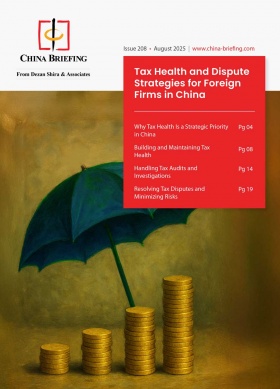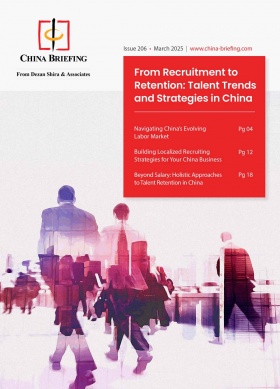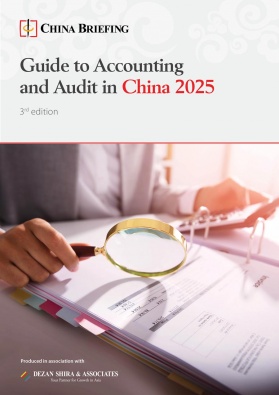What Will China’s Economic Policy Look Like in H2 2025?
China’s recent Politburo meeting set the tone for economic policy in H2 2025. The government will continue to maintain a supportive monetary stance and accelerate local government bond issuance to finance infrastructure projects, while prioritizing consumption, innovation, and structural reforms. However, the better-than-expected GDP growth in the first half has given the country room to hold off on broad-based stimulus — unless the outlook deteriorates again.
China’s recent Politburo meeting set the tone for economic policy in the second half of 2025, signaling a balance between confidence and caution. Policymakers will maintain a supportive monetary stance and accelerate local government bond issuance to drive infrastructure investment, while continuing to prioritize consumption, innovation, and structural reforms as engines of long-term growth.
The stronger-than-expected GDP expansion in the first half has given Beijing breathing room to refrain from deploying large-scale stimulus immediately, helping to preserve policy tools for potential future shocks. At the same time, the leadership made clear that it stands ready to act decisively should domestically demand falter or external pressures — such as renewed trade frictions — threaten economic stability.
In H1 2025, GDP expanded 5.3 percent year-on-year, beating the government’s “around 5 percent” target. Beneath the upbeat headline, however, the economic picture remains mixed. Industrial output was robust (manufacturing rose 6.4 percent, with equipment and high-tech sectors performing even better), but retail sales grew at a softer 5 percent, and fixed-asset investment inched up only 2.8 percent, weighed down by the ongoing property sector slump.
In this article, we explore which policy levers China is likely to keep in play — and which it may reserve — as it navigates the balance between caution and opportunity through the remainder of 2025.
Monetary policy outlook
Continuity with flexibility
China’s monetary authorities are entering the second half of 2025 with a clear preference for stability. With consumer price inflation still hovering below one percent and producer prices continuing their slow climb out of deflationary territory, the People’s Bank of China (PBOC) has ample space to keep monetary conditions accommodative.
The expected shift in US monetary policy toward rate cuts later this year reduces the pressure on the renminbi and opens further room for domestic easing without risking disruptive capital outflows.
This environment favors a continuation of existing monetary measures, such as low policy rates and targeted lending facilities, while still preserving the option to fine-tune tools in response to shifts in domestic or global conditions.
Potential easing measures
Although the central bank’s near-term emphasis is on maximizing the effectiveness of existing instruments, additional easing is not off the table. Analysts note that further reserve requirement ratio (RRR) reductions could be deployed to inject liquidity into the banking system, particularly to support lending to the private sector and smaller enterprises.
Similarly, policy interest rate cuts remain a viable lever to reduce real financing costs, especially if domestic demand weakens. However, such moves are expected to be gradual and data-dependent, reflecting the PBOC’s cautious approach to balancing growth with financial stability.
Targeted support priorities
Monetary policy in H2 is expected to retain a strong sectoral focus. Funding channels, through relending quotas, preferential loan programs, and green finance facilities, will likely prioritize:
- Technological innovation –sustaining China’s push into strategic high-tech industries, from semiconductors to advanced manufacturing.
- Industrial upgrading –supporting productivity gains and modernization in traditional sectors through digitalization and smart manufacturing.
- Internationalization of the renminbi –expanding cross-border settlement mechanisms and currency swap arrangements to promote the yuan’s role in global trade and finance.
Fiscal policy and domestic demand
Bond issuance and fiscal flow
The Politburo’s meeting in July 2025 reaffirmed the government’s commitment to an accelerated issuance and deployment of special-purpose local government bonds in the second half of 2025, with the aim of expediting infrastructure investment and public service upgrades.
As of the end of July, over RMB 2.6 trillion (US$361.70 billion) in new local government bond quotas, around 80 percent of the full-year target, had been issued, marking the fastest pace in five years. Officials signaled that remaining quotas will be front-loaded into early Q3 to ensure fiscal funds reach projects quickly, mitigating any slowdown in private investment.
Boosting consumption and services
Stimulating domestic demand remains central to China’s strategy. Retail sales rose 5.0 percent year-on-year in H1, but the recovery is uneven—urban households are spending more on travel, dining, and entertainment, while rural consumption lags.
To address this, authorities are expanding programs to promote durable goods sales, such as subsidies for energy-efficient appliances, and rolling out incentives for service-based consumption.
The services sector, which grew 6.1 percent in H1, is seen as a key growth driver for H2, particularly in cultural tourism, healthcare, and eldercare.
Marginal support tools
While large-scale stimulus is not currently on the table, the leadership has kept the door open to marginal support measures if growth momentum falters. These could include:
- Targeted subsidies and incentives for sectors like hospitality and green transport.
- Direct cost relief for vulnerable groups, including low-income households and small urban businesses, potentially through temporary grants or tax reductions.
By combining front-loaded fiscal spending with targeted measures to bolster consumption, the government aims to keep domestic demand on an upward trajectory while avoiding the structural imbalances that accompanied past stimulus cycles.
Structural and industrial policy adjustments
Tackling overcapacity and “involution-style” competition
The Politburo’s July 2025 meeting placed renewed emphasis on addressing structural inefficiencies in key industries. In particular, Beijing vowed to curb what it termed “involution-style” competition—where excessive rivalry leads to declining returns and wasted resources—through capacity governance measures. This will involve stricter oversight of new project approvals in sectors such as electric vehicles, batteries, and solar panels, where overcapacity has compressed margins and fueled price wars.
According to data from the China Photovoltaic Industry Association, solar module capacity reached nearly double domestic demand in H1 2025, underscoring the urgency of coordinated industry regulation. Local government incentives that encourage overbuilding (particularly in manufacturing hubs)will be reined in, with the central government linking fiscal transfers more tightly to compliance with capacity control directives.
This mirrors similar approaches used in the steel and coal industries in previous cycles to stabilize prices and reduce waste.
Property Sector: From stimulus to renewal
Notably absent from the Politburo’s July policy guidance was any direct mention of broad-based property market stimulus. Instead, policymakers reiterated their focus on “high-quality urban renewal”, signaling a strategic shift away from speculative housing booms toward targeted redevelopment of aging urban infrastructure.
This aligns with the Ministry of Housing and Urban-Rural Development’s latest figures, which show that 25,000 old residential compounds are slated for renovation in 2025. These projects can support construction activity while avoiding the debt risks associated with large-scale new builds.
Key risks, market sentiment, and policy triggers
All in all, China’s recent Politburo meeting confirmed a steady supportive stance: fiscal policy remains proactive, monetary policy stays “appropriately loose,” and structural reforms take center stage over fresh stimulus to thrill equity markets.
Rather than an immediate stimulus, the emphasis is on continuity and walking the long reform road. Market players have responded with subdued optimism, buoyed partly by expectations that the worst of US-China trade tensions may be behind us.
The Hang Seng’s 23 percent YTD gain in 2025 reflects this cautious optimism. Foreign capital and a weaker dollar have fueled the ascent, but sentiment remains fragile. Without new tools like Pledged Supplementary Lending (PSL) or stronger fiscal injections, particularly to underpin consumer demand and infrastructure, the rally might falter.
Looking ahead, policy direction hinges on two inflection points:
- September–October: The Fourth Plenum and the 15th Five-Year Plan will set the tone for the next wave of structural policies, especially around boosting consumption and reforming welfare.
- External risks: The Trump administration’s decision to extend the tariff truce beyond its scheduled August expiry provides temporary relief to trade conditions; however, any breakdown in negotiations could trigger a faster and more forceful deployment of fiscal and monetary support measures.
Conclusion: Strategic balance between reform and recovery
China enters H2 2025 at a pivotal juncture. Stronger-than-anticipated H1 metrics have given policymakers breathing space, but beneath headline numbers lie cracks: consumer sentiment is fragile, the property sector remains a burden, and export tailwinds may be fleeting. Without timely intervention, these vulnerabilities could cap economic momentum.
That said, China is positioning growth for sustainability over the long haul—prioritizing high-quality consumption, innovation, and structural reform over short-lived stimulus. Markets, particularly in Hong Kong, likely see Q3 as a consolidation phase, with a potential policy-lifted rebound in Q4 once the 15th Five-Year Plan is tabled.
In essence, the challenge for the Chinese government is delicate: foster enough demand to prevent a visible slowdown, while avoiding the overcapacity and leverage traps that haunted past cycles. The dual goal: transition toward a consumption-led, innovation-driven economy, yet without relinquishing short-term stability.
About Us
China Briefing is one of five regional Asia Briefing publications, supported by Dezan Shira & Associates. For a complimentary subscription to China Briefing’s content products, please click here.
Dezan Shira & Associates assists foreign investors into China and has done so since 1992 through offices in Beijing, Tianjin, Dalian, Qingdao, Shanghai, Hangzhou, Ningbo, Suzhou, Guangzhou, Haikou, Zhongshan, Shenzhen, and Hong Kong. We also have offices in Vietnam, Indonesia, Singapore, United States, Germany, Italy, India, and Dubai (UAE) and partner firms assisting foreign investors in The Philippines, Malaysia, Thailand, Bangladesh, and Australia. For assistance in China, please contact the firm at china@dezshira.com or visit our website at www.dezshira.com.
- Previous Article US-China Tariff Truce Extended Another 90 Days: Implications for Businesses
- Next Article







